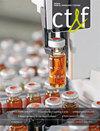TDS技术在多相流中的应用
IF 0.5
4区 工程技术
Q4 ENERGY & FUELS
引用次数: 2
摘要
虽然径向扩散方程已经解决了单相流体的流动,但在某些情况下,从储层到井中有不止一个相的流动;因此,单相解决方案之前已经扩展到多相流,而不会损失很大程度的准确性。实际上,有两种处理多相流的方法:Perrine方法,Perrine(1956)基本上用多相压缩率代替单相压缩率,用流动性的概念对每种流体进行单独分析。另一种是使用伪函数,这是最好的选择。TDS技术已广泛应用于各种场景。Jokhio, Tiab和Escobar(2002)甚至通过使用伪函数成功地测试了它在冷凝系统上的工作。然而,相渗透率、集肤系数和排水面积的估算方程既没有提出也没有测试。在本文中,我们根据Perrine方法和先前提出的估计绝对相对渗透率的方法,提出了一套适用于多相流的TDS技术方程的新版本。我们成功地将所提出的方程应用于综合和现场实例。本文章由计算机程序翻译,如有差异,请以英文原文为准。
APPLICATION OF TDS TECHNIQUE TO MULTIPHASE FLOW
Although, the radial difussivitity equation has been solved for a single-fluid phase flow, in some cases more than one phase flows from the reservoir to the well; therefore, the single-phase solution has been previously extended to multiphase flow without losing a significant degree of accuracy. Practically, there exist two ways of dealing with multiphase flow: The Perrine method, Perrine (1956) which basically replaces the single-phase compressibility by the multiphase compressibility so that each fluid is analyzed separately using the concept of mobility. The other one is the use of pseudofunctions which have been found to be the best option. The TDS technique has been widely applied to a variety of scenarios. It has been even tested to successfully work on condensate systems with the use of pseudofunctions, Jokhio, Tiab and Escobar (2002). However, equations for estimation of phase permeability, skin factor and drainage area has not neither presented nor tested. In this article, we present new versions of a set of equations of the TDS technique to be applied to multiphase flow following the Perrine method along with a previously presented way of estimation of the absolute relative permeability. We successfully applied the proposed equations to synthetic and field examples.
求助全文
通过发布文献求助,成功后即可免费获取论文全文。
去求助
来源期刊

Ct&f-Ciencia Tecnologia Y Futuro
Energy-General Energy
CiteScore
1.50
自引率
0.00%
发文量
7
审稿时长
>12 weeks
期刊介绍:
The objective of CT&F is to publish the achievements of scientific research and technological developments of Ecopetrol S.A. and the research of other institutions in the field of oil, gas and alternative energy sources.
CT&F welcomes original, novel and high-impact contributions from all the fields in the oil and gas industry like: Acquisition and Exploration technologies, Basins characterization and modeling, Petroleum geology, Reservoir modeling, Enhanced Oil Recovery Technologies, Unconventional resources, Petroleum refining, Petrochemistry, Upgrading technologies, Technologies for fuels quality, Process modeling, and optimization, Supply chain optimization, Biofuels, Renewable energies.
 求助内容:
求助内容: 应助结果提醒方式:
应助结果提醒方式:


